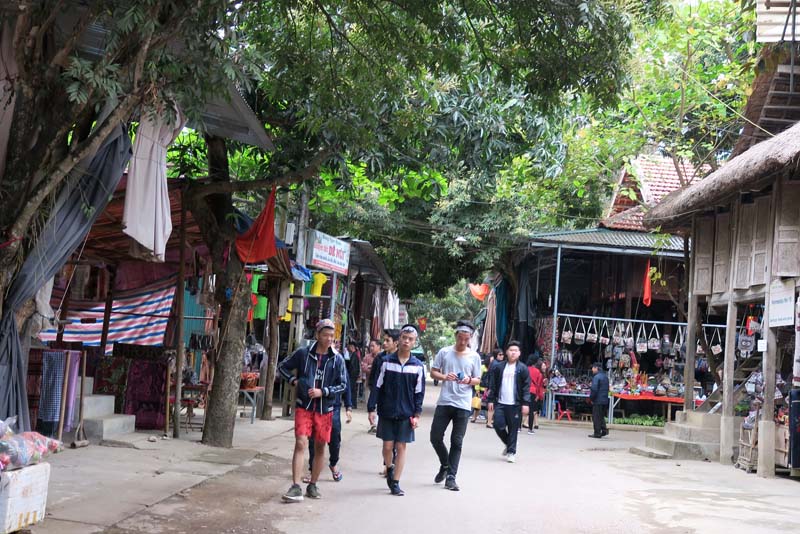
(HBO) - For a long time, Mai Chau town (Mai Chau) has been considered as a beautiful flower among Northwestern mountains by travelers, and those who have great love for tourism. With many beautiful natural landscapes and many ethnic villages with traditional identities, the town is the destination of many tourists. In December 2017, the People's Committee of the province approved the plan to raise the urban area of Mai Chau town from type V to type IV by 2020.
![]()
The alleys in Mai Chau town (Mai Chau) have been gradually renewed and upgraded to serve the tourism development.
In order to expand the space of the town area to match the urban scale, in May 2016, Mai Chau district announced the decision to approve the Scheme on the adjustment of Mai Chau general construction planning with a scale of 1/5000 up to 2025 and the vision up to 2035.
According to the new plan, the direction of town space development will follow a concentrated urban model, developing together with the road which is parallel to the national highway 15. The district's main external traffic will be the national highway 6 and national highway. The adjusted planning area of the town is 4,640.93 hectares, in which the adjusted planning area is 1,029 hectares and the expanded planning area is 3,611.93. With the new planning, Mai Chau town will have adjacent points with Dong Bang, Mai Ha, Pu Bin, Thung Khe, Noong Luong, Na Phon and Na Meo communes.
With a large land fund (after planning), Mai Chau town will have more conditions to invest resources, developing the space of urban service areas. According to the new plan, the public service works such as cultural houses, exhibitions, children's playing areas, trade centers, supermarkets, administrative agencies and so on are built synchronously. The space of the concentrated residential areas in Mai Chau town will be deployed according to the model of taking green trees and public service works such as cultural houses, children's playing areas and kindergartens as a nucleus.
The polluting production facilities such as slaughterhouses, the facilities making noise and affecting the water and air environment are also expected to move out of the urban areas. The district will convert the land funds into green parks, parking lots and high quality public facilities after relocating. The development of the town's space is carried out in the spirit of respecting and preserving the old urban structure, forming a center with a distinctive identity and versatility.
Located just a 20-minute drive from Hoa Binh City, Ora Hill Farmstay & Glamping Hoa Binh is a captivating new destination nestled in Mo hamlet, Bình Thanh commune, Cao Phong district. Combining farming with leisure, this tranquil retreat is perfect for those seeking balance, joy, and an immersive experience in the expansive beauty of nature.
Muong Bi - Tan Lac is renowned as one of the four famous Muong regions in Hoa Binh province. Blessed by nature with a favourable climate and stunning landscapes, Tan Lac holds great advantages for tourism development. The local tourism industry has made remarkable strides in recent times thanks to the attention and support from the local authorities and sectors.
With its strategic location, well-developed transport network, and diverse soil and climatic conditions, Hoa Binh is emerging as a must-visit destination in Vietnam's northwestern tourism corridor. The province boasts numerous attractions, including the Kim Boi hot springs (Kim Boi district), the Dau Rong cave complex (Cao Phong), the Mai Chau valley (Mai Chau), and the iconic Hoa Binh hydropower plant.
The northern mountainous province of Hoa Binh has been listed among the 71 most beautiful places to visit worldwide by the prestigious US travel magazine Condé Nast Traveller.
Hoa Binh province’s rich natural and cultural resources position it as a prime location for developing community-based tourism (CBT). In recent years, support from central and provincial policies, as well as assistance from non-governmental organisations, have encouraged local ethnic minority and mountainous communities to actively engage in the sector.



